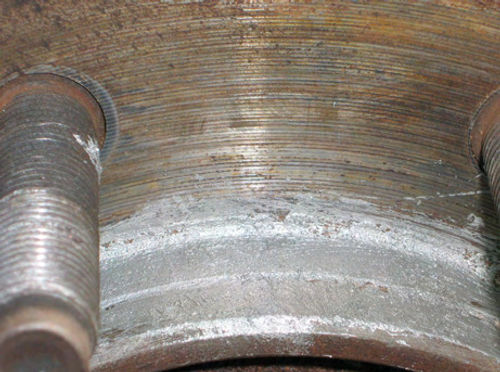Readers’ Tips— Preventing Stuck Wheels
I JUST HAD a little experience with corroded and stuck wheels and brake rotors on my buddy’s pickup truck (a heavy-duty, daily driver in a rust-belt state, and NOT a beautiful resto-dream) and it made me think of a tip I once heard (probably in AR!) of using Anti-Seize Lubricant to prevent a recurrence of the frozen wheel.(Editor’s note: According to the manufacturer, Anti-Seize is a refined blend of aluminum, copper and graphite lubricant that’s used during assembly to prevent galling, corrosion and seizing and to assure easier disassembly. Its temperature range is-60° to 1600° F and it’s resistant to salt, corrosion and moisture.)
But then after the Anti-Seize idea came to me, 40 years of engineering in the auto plants kicked in and I got scared that I might jeopardize the proper retention of the wheel/studs/nuts system.
Here’s the deal: the bolt/stud is really a big, very high spring-rate spring that forces the wheel’s flat face against the hub’s flat face. The thing that keeps this from working loose is the friction between the wheel and the hub. If those two surfaces slip, even just a little bit, the whole thing comes unglued—with terrible results.
So, here’s what I did. I used that Anti Seize tip with caution. Since this pickup’s wheel and disc inner diameters have a tight slip fit onto the hub’s outer diameter (to properly locate the wheel/disc on center but not to hold them tight) I only put the Anti-Seize on the hub’s outer diameter (or the wheel’s/disc’s inner diameter). Get the idea? In the future, any corrosion on the flats should be fairly easy to break loose (tension force) and the hub surface should have some protection from corrosion plus the Anti-Seize will be there as a lube (shear force and motion).The flat mating faces will stay free of lube and will have the same frictional grip that they need to stay secure.
Included are two photos I took as I applied the Anti-Seize. One is of the ratty corroded hub surface (after intense use of Scotch Brite) and the other is of my cautious Anti-Seize application.

(Side note: you can kind of see the two diameters turned on the hub. The in-board, larger one is for the brake rotor and the out-board,slightly smaller for the wheel. I coated both since both parts were a holy pain to get off. Yet another side note: In the photos, notice the coarse, rough turning marks on the flat surface of the hub. I’ll bet you that the surface is left rough like that to aid in getting the mating surfaces to lock together by friction.)
I hope my cautious method works for me and other car nuts.
—Bob SWARTZ, Waterford, Michigan
















